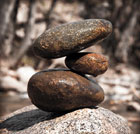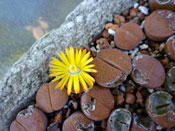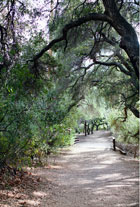Quiet Crow Bonsai
A Collection of Stellar Bonsai MusingsArticles
Wabi Sabi Essence
The term wabi sabi is derived from two characters shared by Japanese and Chinese. Originally, wabi 侘 means ‘despondence’ or ‘poverty’, and sabi 寂 means ‘loneliness' or 'solitude'.
These are words for feelings, not for physical appearance of objects. The term embodies a refined aesthetic sensibility that was very evident in ancient Chinese art and literature long before the concept was popularized in Japan through the introduction of Zen Buddhism and the Tea Ceremony.
Wabi (trans: ‘poverty’) "Wabi" stems from the root wa, which refers to harmony, peace, and balance. Wabi is a way of life or spiritual path. It precedes the application of aesthetic principles applied to objects and arts, the latter being sabi.
In the Bonsai context, Wabi does not refer to ‘poverty’ in the context that it is most commonly associated with. In the Bonsai context, Wabi refers to an individual’s lack of reliance on material possessions and simplicity in one's life. Wabi then, surpasses material wealth, but places much emphasis on wealth of mind. Zen bonsai utilizes this concept, focusing on nature as wealth, found in working with a tree.
Sabi (trans: ‘loneliness’ or ‘solitude’) "Sabi" by itself means "the bloom of time", literally solitude or even loneliness, connotes is the kind of beauty that can come only with age, such as the patina on a very old bronze statue. Sabi is most often applied to physical artistic objects, not writing. In the Bonsai context, ‘Sabi’ refers to antiquity and an element of simplistic design, both primitive and devoid of modernism. Sabi mainly comes into play in Zen Bonsai when considering pots and ‘antique’ trees. When considering Bonsai in an historical context, you acknowledge that Bonsai is rooted in Zen philosophy.
So now we have wabi, which is humble and simple, and sabi, which is rusty and weathered. Wabi-sabi reflective and contemplation that returns to wabi and back again to sabi, an aesthetic experience intended to provoke a holistic perspective that is peaceful and transcendent is underplayed and modest, the kind of quiet, undeclared beauty that waits patiently to be discovered.
Pared down to its barest essence, wabi-sabi is the Japanese art of finding beauty in imperfection and profundity in nature, of accepting the natural cycle of growth, decay, and death. It's simple, slow, and uncluttered-and it reveres authenticity above all. Wabi-sabi is the ideal Japanese aesthetic. It is a beauty of things imperfect, impermanent, and incomplete. It is a beauty of things modest and humble.
In the next segment we will explore the Wabi Sabi Aesthetic. Read More





